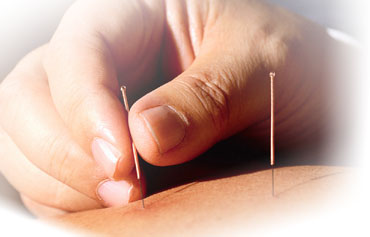 Acupuncture has been practiced in China unchanged for approximately 3000 years. It is considered part of a larger system of medicine called Traditional Chinese Medicine that includes the use of herbs, moxabustion (heating of the needles), massage, diet, and Qi Gong (gentle exercise concentrating on breathing and balance) to correct imbalances within the body.
Acupuncture has been practiced in China unchanged for approximately 3000 years. It is considered part of a larger system of medicine called Traditional Chinese Medicine that includes the use of herbs, moxabustion (heating of the needles), massage, diet, and Qi Gong (gentle exercise concentrating on breathing and balance) to correct imbalances within the body.
Acupuncture is defined as the insertion of very fine stainless steel needles into the body at points along a series of meridians. These meridians can be thought of as “rivers of energy” which connect all parts of the body in a network that runs from our head to our feet and hands. This network can best be compared physiologically to our nervous system. In Traditional Chinese Medicine, disease is defined as the disruption of life energy (called Qi) in these meridians. The Qi can either be deficient or in excess within the meridians or organs of our body. This concept is really no different than the Western diagnosis of an organ overworking (such as the thyroid over producing hormones) in a hyper state, or under working in a hypo condition.
The Chinese believe each of 461 main points have very specific physiological effects upon the body. Recently a study at Loma Linda Hospital using advanced PET scans of the brain validated this. A scan of the visual cortex within the brain was mapped before and after points correlating to eye problems were needled. After stimulation of these points, there was clear effect within the visual cortex, providing acupuncture vital scientific validation.
Acupuncture was introduced into the United States in 1970 when President Nixon visited China. His press secretary had an emergency appendectomy in which only acupuncture was used as anesthesia. This procedure was so effective that doctors from UCLA visited China and began using acupuncture in their pain clinic in conjunction with conventional therapies. These procedures continue to this day.
In the last twenty years, acupuncture has seen an explosion in use and recognition. Most notably, its ability to reduce pain has been documented time and again. Scientifically, this phenomenon has been explained by studies in which acupuncture caused the brain to release powerful nero-transmitter substances called endorphins. These chemicals are believed to be more powerful than morphine in controlling pain. Recent studies have also shown acupuncture to have strong anti-inflammatory effects on traumatic injuries while improving circulation to injured areas. For many years, acupuncture with its pain reducing ability was thought to be appropriate only for short-term symptomatic relief. However, with these new properties coming to light, it is now accepted that acupuncture can help speed up the healing process with traumatic injuries such as neck and back strain, tendonitis, and chronic headache.
With scientific studies finally shedding light on acupuncture’s healing potential, Western doctors are beginning to integrate this non-drug therapy into their patients’ treatment plans. Most major insurance companies are also seeing the benefits with increased coverage of acupuncture for structural problems. Acupuncture is also part of California workers compensation law, allowing injured workers to utilize this modality as part of their healing process.
The future for acupuncture is incredibly bright as new studies are showing benefits in many other medical conditions such as digestive, gynecological, and infertility problems. Others are using acupuncture for stress relief and immune system enhancement with great success. As Western medical research uncovers more about the uses of acupuncture, this traditional method of healing will undoubtedly continue to grow in popularity.